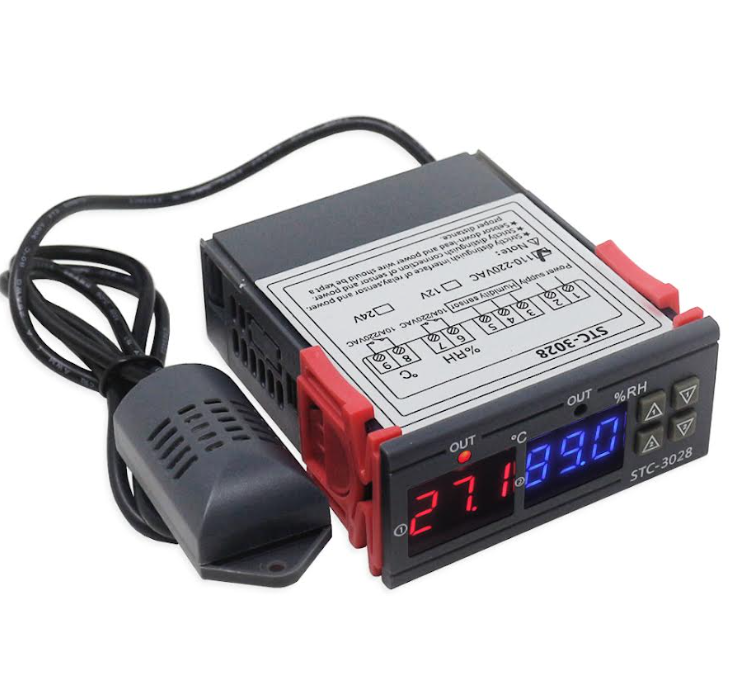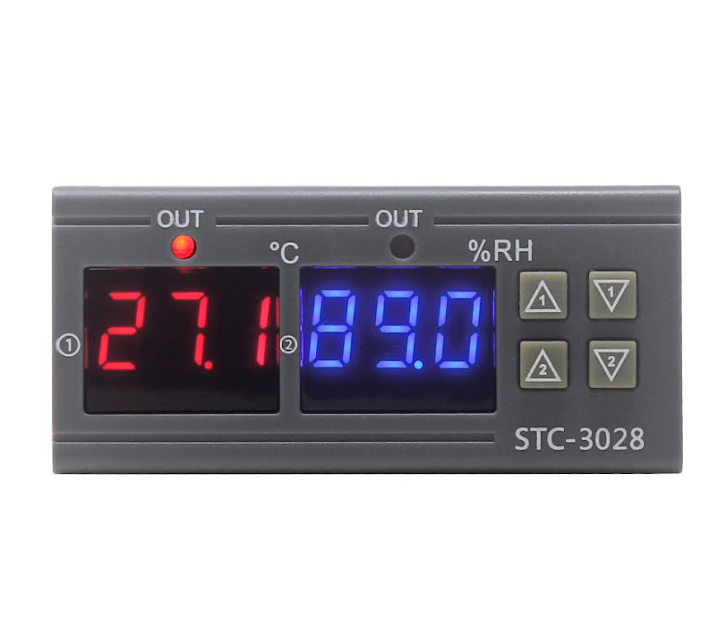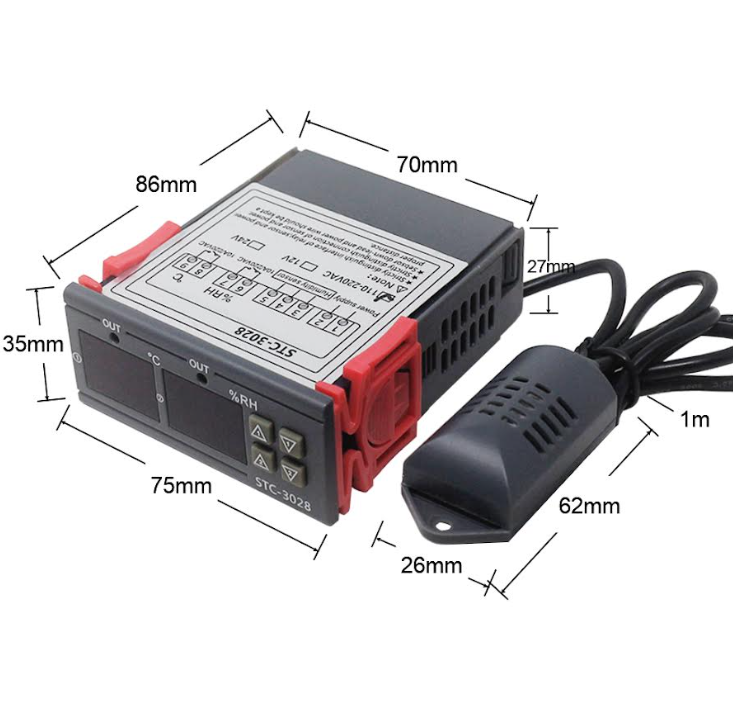The STC-3028 is a high-precision digital temperature controller designed for accurate temperature management in various applications, including aquariums, terrariums, greenhouses, incubators, and industrial temperature control systems. It operates on an AC 110-220V power supply, making it ideal for household and industrial use. The controller features a waterproof sensor, ensuring reliable performance even in humid or submerged environments. It offers a clear digital display for real-time temperature monitoring, adjustable temperature range, and a built-in relay for automated heating or cooling control, providing precise and efficient temperature management.
Front panel size: 75(L)×34.5(W)(mm)
Mounting size: 71(L)×29(W)(mm)
Product size: 75(L)×34.5(W)×85(D)(mm)
Sensor length: 1m(include the probe)
Temperature measuring range: -20℃~80℃
Humidity: 0~100%RH
Resolution: 0.1℃
Accuracy: ±1℃, 0.1%RH
Power supply: 220VAC+10%, 50/60Hz
Power consumption: <3W
Sensor: NTC sensor(IPC)
Ambient temperature: 0℃~60℃
Storage temperature: -30℃~75℃
Relative humidity: 20~85%(No condensate)
STC-3028 Digital Temperature Controller with Waterproof Sensor (AC 110-220V)
STC-3028 Digital Temperature Controller with Waterproof Sensor (AC 110-220V)
14 in stock
Product Code
SKU:2160
Regular price
₱ 469.00
Regular price
Sale price
₱ 469.00
Unit price
per
Couldn't load pickup availability






